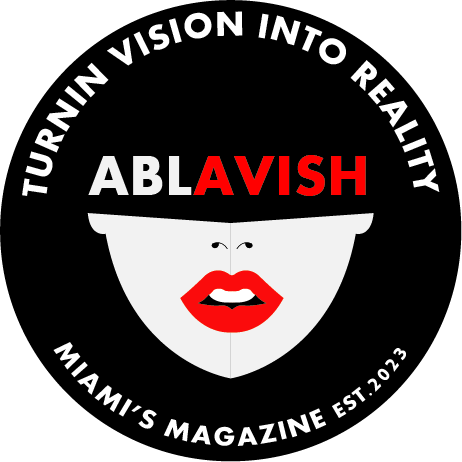The Brutalist, AI, and Oscar Campaign Skulduggery


When Peter Jackson’s Beatles documentary Get Back debuted in 2021, the fact that Jackson had used artificial intelligence to clean up previously unusable audio was greeted with enthusiasm from tech geeks, and crickets from most everyone else. But a lot has changed over the past few years, and when the story broke in mid-January that Brady Corbet’s The Brutalist had used AI behind the scenes, social media reactions ranged from “I’m afraid The Brutalist can kiss my arse” to “Get fucked” to simply “Evil.”
The controversy sprang from an interview the film’s editor, Dávid Jancsó, gave to an outlet called RedShark News in which he spoke of using an AI voice-cloning tool, Respeecher, to tweak Adrien Brody and Felicity Jones’s Hungarian dialogue. “If you’re coming from the Anglo-Saxon world certain sounds can be particularly hard to grasp,” Jancsó said. “We were very careful about keeping their performances. It’s mainly just replacing letters here and there.” Additionally, RedSharkNews reported that the film had used generative AI “to conjure a series of architectural drawings” for the movie’s epilogue, which takes place at a career-achievement ceremony for the titular Brutalist at the Venice Biennale.
To understand why any of this is controversial, it helps to know that, since Get Back, a whole bunch of people — many of whom overlap with the core audience for a three-and-a-half-hour movie about architecture — have turned against artificial intelligence in general. At this point, AI is an expansive concept that is almost as much a marketing term as a technology; it includes subsets like machine learning, in which an algorithm is taught to recognize patterns, as well as generative AI, in which programs like ChatGPT and Midjourney are trained on previously published words and images. Generative AI is the thing that’s flooded the internet with AI slop (if you want to signal that you have the correct opinion about AI., you have to call it “slop”), and it has also enabled Google’s new AI Overviews that dispense false information. To make matters worse, the data centers required to keep it online consume environmentally ruinous amounts of water and electricity. To the enlightened reader of 2025, generative AI is not just ugly but anti-human, a moral contagion that poisons everything it touches.
These products have so tainted the AI brand that it’s now common to conflate every instance of artificial intelligence with generative AI. I first noticed this back in 2023, when Jackson and the surviving Beatles trumpeted their use of AI in the production of the previously unreleased song “Now and Then,” leading many to erroneously assume that the track had been created wholly by AI. In reality, they merely used the machine-learning tech from Get Back to split an old demo recording into its component parts — vocals, piano — allowing it to be remastered.
A similar phenomenon took place around The Brutalist. As Jancsó’s interview made the aggregation rounds, key details were changed or taken for granted: Some critics inferred that all of Brody’s Hungarian dialogue was AI generated, and that generative AI had created his character’s entire body of work. These reports spread online, often through journalists who rightly consider generative AI an existential threat to their own livelihoods. This in turn produced even more outraged reactions on social media, which were then used as grist for blog posts about the controversy. Throw in the sour pre-inauguration mood of left-wing social media, and you have an awards-season backlash that master Oscar manipulator Harvey Weinstein himself could be proud of.
Complicating matters was the fact that The Brutalist was not the only film in the race to wield the Respeecher tool: Emilia Pérez and Maria employed it to aid their actors’ singing. Furthermore, while ReSpeecher does use generative AI, and has been used to do creepy stuff like revive the voices of dead celebrities, its use in The Brutalist doesn’t seem to cross any more ethical boundaries than other digital touchups common in post-production. Brody and Jones consented to their performances being altered; the Hungarian accent synthesized with their voices was Jancsó’s own. There doesn’t appear to be a victim here.
The case of the drawings is murkier. As the controversy swirled, fans dug up a 2022 interview with Brutalist production designer Judy Becker from Filmmaker magazine, which revealed that “architecture consultant Griffin Frazen used Midjourney ‘to create three Brutalist buildings quite quickly’ by using references to key figures in the movement along with other architectural terms.” However, in a statement to Deadline, Corbet pushed back against the implication that AI was responsible for the blueprints: “Judy Becker and her team did not use AI to create or render any of the buildings. All images were hand-drawn by artists.” He added that the editorial team had used AI to create “pictures intentionally designed to look like poor digital renderings circa 1980” for a video that plays during the epilogue.
Accusing the film of using generative AI is almost too perfect of an awards-season attack.
The film’s distributor, A24, says AI only generated two images, which appear as digital renderings in that video. The other featured blueprints were conceived and drawn by human beings, they say, as were the other buildings seen in the film. To square this statement with Becker’s, you may need to resort to Clintonian word games: AI was used in the creation of the designs, but it was not used to create the designs.
Regardless, this use-case muddies some of the traditional arguments against AI. Here, the tech does not appear to have put any human artists out of work. If AI were used to generate concept sketches, the practice does not seem radically different from a filmmaker’s mood board featuring copyrighted photos and drawings, none of which are licensed. (The terrible environmental effects of AI remain germane, though few films would pass an environmental-impact assessment.)
Whatever your feelings about AI ethics, everyone agrees that The Brutalist is particularly vulnerable to any association with AI. The film was shot on a rarely used format called VistaVision, and throughout the season it has positioned itself as a tribute to — and hopefully, an example of — the power of human creativity. Corbet has been open about the compromises it took to produce a film like this for reportedly less than $10 million, and while he’s been given a pass for shooting in Hungary, a nation whose leader makes Donald Trump look like Dennis Kucinich, the use of generative AI undercuts its central theme. Not to mention what it may say about the work of fictional hero László Tóth. As one astute Vulture commenter noted: “If AI functions by generating images via the compositing of a mean average, this immediately suggests that Tóth’s life work fits squarely in the middle of a style of Brutalist architecture that is not singular and iconoclastic but rather typical and intermediate.”
The angle of attack is so perfect that some Oscar-watchers can’t help wondering whether the AI story was seeded by a competing awards campaign. “‘The Brutalist used AI, actually,’ is one of the deftest Oscar campaign sniper attacks I’ve ever seen,” The Ringer’s Joanna Robinson wrote on Bluesky. For what it’s worth, I’m told A24 doesn’t suspect any skulduggery, just the chaos of an online news cycle. These sorts of things do happen, though. A few years back, I received an email from a stranger directing me towards problematic passages in a certain elderly acting contender’s memoir. I didn’t feel they were worth publishing, though a blogger from another outlet eventually ran the story. The actor, who was eventually nominated, was entirely unaffected.
That seems to be the consensus about this controversy, too. Oscar voters brushed off online backlashes around La La Land, Three Billboards Outside Ebbing, Missouri, and Green Book, all in an era when Twitter was far more culturally dominant. A member of the Academy’s writers branch offered his own take to me after the nominations. AI is “the great monster looming over us all at the moment,” he said. But he was fatalistic about the industry’s ability to resist. Trying to forestall technological progress was like trying to stop the tide: “Forget about it.
A depressing thought perhaps, but on the bright side, this controversy has delayed for at least one week the inevitable “Is The Brutalist Zionist” debate — a fight that has the possibility to tear us all limb from limb.
The nominations for the 2025 Academy Awards were announced earlier this week. You can read about all the snubs and surprises here. This means the end of our Oscar Futures rubric, but we’ll continue to share insider gossip and track industry buzz here at Gold Rush until the ceremony on Sunday, March 2.
Other News and Notes
➼ What if every Oscar movie was a cardinal from Conclave?
➼ Why the Best Picture announcement featured so many “nominees to be determined.”
➼ There will be no performances of the Original Song nominees this year.
➼ How to watch and stream all of this year’s contenders.

Latest News
For Sale! 2016 Sea Ray 350 Sundancer – $180,000
Reel Deal Yacht is pleased to feature a meticulously maintained 2016 Sea...
Classic encounter on ice as United States wins women’s hockey worlds 4-3 in OT against Canada
Tessa Janecke scored the winner as the United States prevailed in overtime...
Justin Thomas ends 3-year drought with playoff victory in RBC Heritage
Justin Thomas had one more hurdle to prove his game was back...
Derrick White scores 30, Tatum stays in game after fall and Celtics beat Magic 103-86 in Game 1
As the Celtics were taking control of their playoff opener against the...
Mitchell, Jerome help Cavaliers rout Heat 121-100 in Game 1 of 1st-round series
Donovan Mitchell scored 30 points, Ty Jerome had 16 of his 28...













